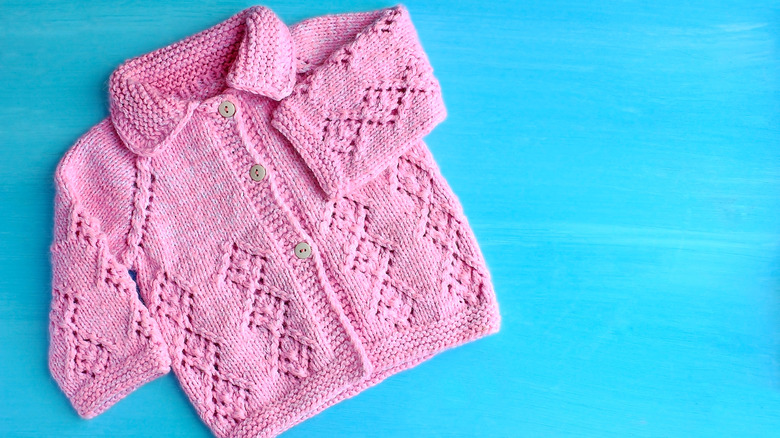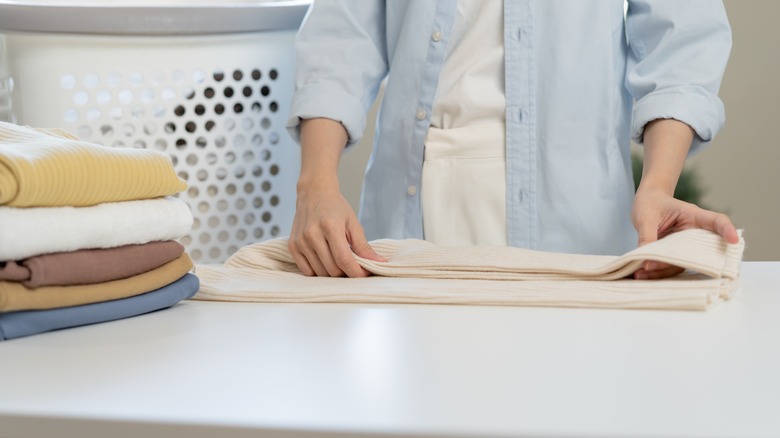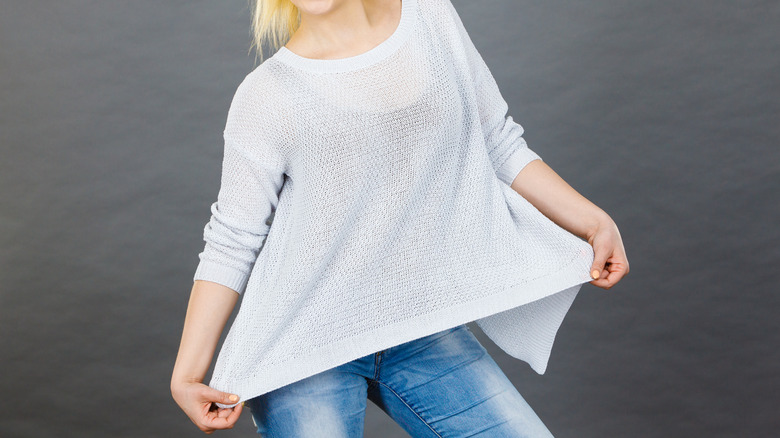How Important Is It Really To Lay Laundry Flat To Dry?
Laundry is a chore that many people dread because it takes hours to complete, and the pile never seems to end. But laundry is also tiresome because each garment has its own special needs. In fact, the Federal Trade Commission requires all manufactured and imported clothing to have care instructions attached. These tags aren't just there to make the back of your neck itch; they're essential directions to follow if you want to prolong the life of your clothing.
"Lay flat to dry" and "dry flat" are standard care instructions for stretchy clothing items like knitwear, and they're also probably the most ignored. But it seems hanging these items on a line or even tossing them in the dryer is much easier when laundering. Although it can be tempting to bend the rules sometimes, you should always follow the directions for your "dry flat" items. It's better to take the time to dry flat than to have warped, stretched, or ruined clothing.
Why you should actually dry flat
Materials like cashmere, wool, and knitwear hold a significant amount of water after washing. Hanging these heavy items will pull them out of shape, creating the dreaded shoulder indentations, creases, and stretched-out necklines. Line-drying items that should be dried flat can also change how they fit your body, pull hemlines lower, and stretch the shoulders. Tumble-drying delicate materials may prevent these specific issues, but it will almost certainly lead to shrinkage, unraveling, and pilling problems.
To "dry flat" means to lay the garment out to dry on a flat surface, like a table or countertop. Although it can be tempting to drape items over a drying rack, it's better to lay your clothes on a table. The bars of your drying rack can still create indentations and apply unnecessary pressure to the material. Heather Solos, founder of the Home-Ec 101 blog, recommends placing a dry bath towel under your clothing for faster drying time. Drying flat is crucial to preserve the shape and integrity of the fibers, keeping them soft, flexible, and comfortable for many years to come.
Quick fixes for warped clothing
Did your knitwear get mixed up in the wash? Or did you forget to check the care label on a new purchase? Forgetting or neglecting to follow washing instructions can take a toll on your clothing, but accidents happen. Luckily, it may not be too late to fix your favorite sweater.
To fix hanger bumps or indentations in your sweaters, Philadelphia Magazine suggests dipping your fingers in water and rubbing out the bumps while wearing the clothing article. After about 10 minutes, the fibers should reshape to fit you correctly. For severe issues like sagging, shrinking, or warping, it's best to re-wet the garment or re-wash it according to the care instructions. Once the item is wet, gently pull the material back into shape with your fingers and lay it flat to dry. To prevent future accidents, consider washing all of your "dry flat" items together so they are easy to keep track of, and fold sweaters, so they hang over the bottom of your hangers.


